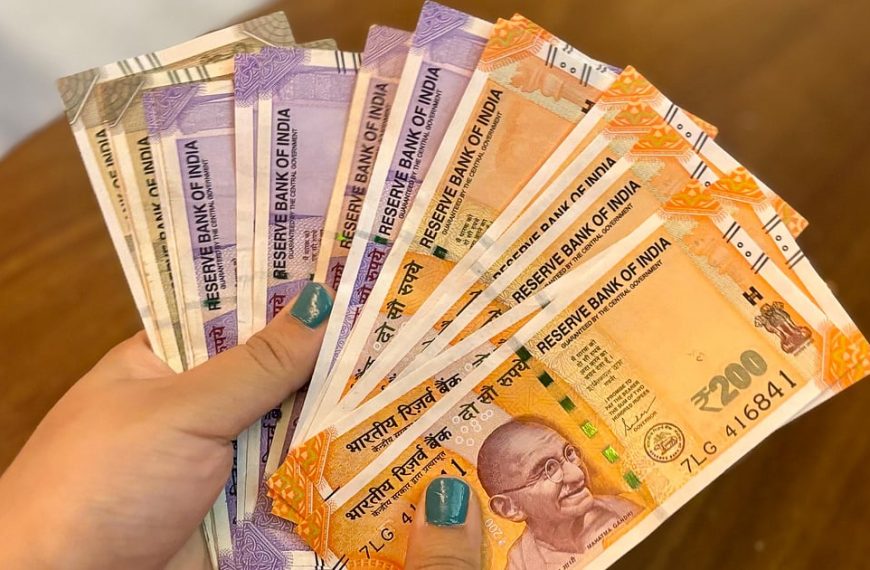The financial landscape is currently navigating some turbulent waters, particularly in the U.S. stock markets, which faced consecutive days of declines amid rising recession concerns following the announcement of new tariffs. Meanwhile, Indian markets, initially resilient, succumbed to global anxieties as investors assessed the potential ramifications of a worldwide economic slowdown. In this climate, the pressing question for investors is: where should they allocate their resources? Anand Shah, Chief Investment Officer of PMS and AIF Investments at ICICI Prudential AMC, suggests a balanced approach that includes equity, debt, and a touch of gold.
Outlook for Market Growth
Shah remains optimistic about a 10-11% growth in Nifty earnings over the next three years. However, he cautions that the art of stock-picking is likely to become significantly more complex. One of his primary concerns lies within the technology sector, which, due to high expectations, may not meet investor ambitions. In an exclusive dialogue with Financial Express, Shah elaborated on the implications of tariffs, GDP forecasts, and the intricacies of selecting stocks in this evolving market.
Impact of Tariffs on Indian Firms
The tariffs introduced by U.S. President Donald Trump could have far-reaching effects on Indian companies. Higher consumer taxes could either lead to increased prices for consumers or force manufacturers and exporters to absorb the costs—especially if their profit margins are already tight. This scenario could hinder growth in the U.S. market. For manufacturers dependent on sales in the U.S., the situation is dire, as both sales and profit margins may come under significant pressure.
- To combat these challenges, we might observe increased government spending in regions like Europe, China, and even India.
- While supportive government measures could boost global consumption, inflation might temper these benefits. Therefore, domestic manufacturers catering to local markets—be it in India, the U.S., Europe, or China—could emerge as key beneficiaries.
Resetting Expectations for 2025
Reflecting on the past four years, Shah notes they have been exceptional, with growth rates surpassing 30% and stock markets yielding over 20% CAGR. However, he argues that these extraordinary conditions have led to inflated expectations. As we transition to a period of normalization, growth rates are likely to align more closely with nominal GDP growth, estimated at 10-11%.
- Even if market valuations fluctuate, returns are expected to remain within this range over the next 3 to 5 years.
- The ability to outperform the market has become more challenging as both market beta and alpha are reverting to standard levels.
Future Earnings and Market Stability
Shah anticipates a 10-11% earnings growth over the next three years, suggesting that the current price-to-earnings (P/E) ratio is stable. Unless a significant macroeconomic event occurs, market returns should fall within this growth projection.
- Corporate India and banks are positioned strongly; over the past four years, companies have deleveraged, resulting in decreased earnings volatility.
- The banking sector, being the most leveraged part of the economy, has improved its asset quality and provisioning.
Sectoral Preferences for Investment
When it comes to sector preferences, Shah emphasizes a domestically-focused strategy:
- Preferred sectors: Banking, select cyclicals, real estate, and certain commodities (notably metals).
- Underweight sectors: IT, FMCG, and Pharmaceuticals.
Untapped Opportunities in Metals
A noteworthy opportunity lies within the metals sector. Historically, China has dominated metal consumption and exports, but this trend may not be sustainable. Factors such as rising labor and energy costs will diminish China’s competitive edge, while India, with its abundant natural resources and cost advantages, is poised to emerge as a significant global supplier of metals.
Caution in High-Expectation Sectors
Shah expresses concern for high-expectation sectors, particularly IT. Although these companies typically generate substantial cash flows, they heavily rely on U.S. demand. An economic slowdown in the U.S. due to tariffs could lead to reduced corporate IT spending, requiring investors to adjust their expectations.
Strategic Asset Allocation for Investors
In current market conditions, Shah advocates for a diversified asset allocation strategy:
- Multi-Asset Investing: A recommended blend of equity, debt, and a small allocation to gold.
- Equity Focus: While large-cap stocks are favored, selective mid- and small-cap investments can be worthwhile following recent market corrections.
- Gold Exposure: Given its current valuation, it might be prudent to reduce some exposure.
- Debt Investments: These offer stability and should remain a core component of an investment portfolio.
Growth of PMS and AIF Products
The popularity of Portfolio Management Services (PMS) and Alternative Investment Funds (AIF) is on the rise. As Indian investors transition from traditional fixed-income avenues to mutual funds, more individuals are likely to explore PMS and AIF options, even though these come with higher risks and require longer investment horizons.
Preferred PMS Strategies
Among the various PMS offerings, Shah favors flexible approaches, such as flexi-cap funds, as opposed to concentrated small- and mid-cap strategies. He suggests a staggered allocation strategy to manage risk effectively.
Interest Rates and Economic Outlook
As the RBI policy meeting approaches, Shah believes rate cuts are necessary due to the slowing growth. Provided there are no unexpected inflationary shocks, there should be ample opportunity for rate reductions in the near future.
In conclusion, as investors navigate this complex market landscape, a diversified investment strategy focusing on domestic opportunities may provide a path forward amidst global uncertainties.











